We breakfasted in the hotel and enjoyed the new savory items on the menu. I poured Prosecco into our orange juice, and we toasted to the start of our second weekend in the paradise of Prague. A server asked if we were celebrating a special occasion, but we replied that we were merely happy to be there! Being in a beautiful culture, in a beautiful city, amongst beautiful personalities is always refreshing and stimulating.
Before we left, the Front Desk team notified us that Prague’s Exhibition Grounds hosted its annual Fun Fair. Using the internet on my phone, I found an article about it on Expats.cz. (The website is intended for immigrants and expats, but it’s useful for anyone who wants to know about Czechia. In 2001, it was created by an English immigrant named Martin Howlings. It earned 10,000 followers within its first year. We use the multi-faceted website often).
The fair began in 1595, as part of a pilgrimage for Saint Matthew. At that time, Pope Clement VIII illegally profited from selling “indulgences”. The selling of Indulgences was a scam that the Catholic Church invented. The pope said that it was a forgiveness of sins that God approved, and an Indulgence could also be bought to release souls from purgatory. Purgatory was a fictional place that the Catholic Church invented—where souls were suspended before Hell—and the intention was to frighten believers into paying to free certain souls. So, Pope Clement decided to be racketeer and sell Indulgences to anyone who was on a pilgrimage. That made pilgrimages popular—which other businesses profited from. The fair in Prague is a centuries-old tradition that Praguers still enjoy… now for purely secular reasons.
Riding the Metro, we ventured to Karlin to explore the area.
This is Karlin's coat of arms...
That day, Prague’s Winter Run occurred, and we noticed some runners in Karlin. We also saw a market named Asia Foods. It was clean, organized, and well-stocked: vermicelli noodles, Jasmine rice, spices, bouillon, coconut milk, Pho flavoring, dried seaweed (for snacks), seaweed crackers, dried mushrooms (for cooking), mochi ice cream, and assorted herbal juices. The store also sold Korean alcohol and global wines.
We lunched at Hong Kong Karlin, which opened in 2020 as a gastronomic pioneer led by Czech chefs who love China’s 3,000-year culinary heritage.
Like a classic Chinese restaurant, it had a window that displayed roasted ducks—hanging from hooks. The ducks looked moist and perfectly-crispy! We anticipated a delicious lunch—full of chargrilled meat and handmade dim sum.
Lewis’ parents owned three high-quality Chinese restaurants in Manhattan, so he developed an appreciation for proper cookery, and he knows what authenticity tastes like. The chef at his parent’s third restaurant was Cantonese and showed him how to accurately make the recipe of Peking Duck. My beau is always interested to see how other cultures prepare Roast Duck or Peking Duck. Hong Kong Karlin impressed him.
Customers started to fill the restaurant as we arrived, and that proved its popularity. The spacious interior is decorated with wood and concrete.
Tables were set with utensils and chopsticks that were carefully positioned on chopstick-holders. A long bar filled one end, and the open-kitchen was behind it.
As usual, the lavatories provided soap and hand lotion.
All of the employees were Czech, and that reminded us of our glorious Chinese lunch in Berlin at Golden Monkey—also operated by white guys who mastered the art of China’s cuisine.
Wearing a denim apron with red suspenders, a bearded waiter escorted us to a red velvet banquette. We had a perfect view of the bustling kitchen crew. Evocative of Hong Kong’s climate, tropical plants and birds were hand-painted above the kitchen’s pass. Four Italian men sat at the table next to us. A father brought his young children to have lunch there. Our waiter kept everyone entertained. When handsome Czech men arrived, the other waiter suddenly appeared and made a show of flexing his arms as he took their order and adjusted his suspender straps. That “show” was amusing for us.
As the cooks began their dexterous work, the aromas were mouth-watering.
Our meal began with plump scallops: two good-sized mollusks on each plate.
They were so delicious that we ordered more! That made our server smile with pride.
We also got a plate of grilled Giant Prawns that came on a bed of minced cucumber, pepper, tomato, and onion.
I requested one of my favorites: Soft-Shelled Crab encased in a perfect batter, with dollops of dipping sauces surrounding it. The crabs were meaty and the frying oil was fresh.
The shrimp siu mai were amazing: delicate dough and correctly-firm filling with a dab of caviar.
Naturally, we ordered their prized recipe of Peking Duck! Their perfect cooking methods preserved a thin layer of juicy fat between the skin and meat. (Duck fat is healthier than you think: it’s low in saturated fat and higher in nutritious polyunsaturated ones).
With precision, the chef sliced the meat thinly and presented it as a crescent-shape on a platter. Skillfully, he left the crispy skin on the meat for our enjoyment. The traditional recipe requires crepes to wrap the meat in, and we were given an abundance of them—rolled and pre-filled with duck meat.
Dollops of sauce were on the platter, and they tasted very good… not too salty. Another portion of duck was served in a tossed salad, garnished with toasted sesame seeds and micro-greens. A bowl of rice accompanied our meal, topped with toasted onion bits.
Everything was lovely. Our compliments went to the chefs! The meal cost 2,530 crowns ($106).
It was a beautiful Saturday morning, so we departed and explored the newer part of Karlin. The government designated Karlin as an Urban Monument Zone, so historic structures are preserved whilst new ones are added along the waterfront. We zigzagged through the streets, crossed the tram rails embedded in Sokolovska Street, and headed north.
We were impressed with the new construction of stylish offices, condos, and apartment buildings near the river. Below is Nile House (named for the river in Egypt) and Danube House (the river in Austria).
Between the offices and condos, there was an ice-skating rink for winter enjoyment.
Next to it, a grassy area had Adirondack chairs for public use. It reminded us of Oslo and Governors Island.
A big white pedestrian bridge stretched from the riverbank to Štvanice Island—in the middle of the river—and it continued to the other side of the river.
It was erected last year in 2023. Named Stvanicka Lavka, it had an offshoot that provided access to the island. The whole structure was attractive and sleek, and it was only built for pedestrians and cyclists.
It reminded us of non-car infrastructure in the Netherlands. Seen below are images from the city's website that show an aerial view.
NYC needs things like that… but NYC doesn’t care about creating safe things for pedestrians and cyclists. Lewis and I currently live in a building on the riverfront in NYC, and Randall’s Island is nearby, but pedestrians must use the gigantic vehicle bridge (Triborough Bridge)—which is strewn with broken bottles and full of car exhaust.
Randall's Island has a soccer field, but most of the island is consumed by the city to hold a big Sewage Treatment Plant and a huge Psychiatric Asylum. Things are nicer in Prague.
We joined dozens of folks who used the new bridge to cross the river.
The railing was handsomely made of bronze, and the ends were shaped as rabbits. As I mentioned, Prague is a city of whimsey.
We descended to the island to watch people feeding ducks by the shore. Recently, animals that resemble otters infiltrated Prague, and since they don’t have predators, they are causing an infestation. People should not feed them. The government wants to remove that invasive species from the ecosystem. Thankfully, we only saw ducks being fed.
With a length of 500 meters, the island was named for “Hunts” because recreational dog hunts occurred there from 1690 to 1816. The island has tennis courts, ball fields, sports clubs, year-round enclosed skateparks, and picnic areas. The Prague Open tournaments occur there.
Praguers swim in the waters—leaping from the grassy shores and floating docks. Steps and ramps exist to launch kayaks.
It's nice to live in a metropolis that has clean water.
In the evenings, nearby cafés have illuminated seating areas near the riverbank. Beautiful Life/Work Balance.
All around us, people enjoyed the nice weather: sunglasses, thermoses, folding chairs, blankets, and cushions. The island was litter-free and void of vandalism. Lovely.
From April until October, the island will provide kayaking, rafting, e-foiling, paddle-boarding, and “surfing on manmade river waves”. That’s awesome! It looks like this...
Lewis and I retraced our steps to the Metro station. On the way, we crossed the spacious park in front of a church named for Saints Cyril and Methodius. It was a two-towered beauty built in 1854 during a visit to Prague by Emperor Franz Joseph and Empress Elizabeth (nicknamed Sissi).
Thick trees lined the path through the park. Children used the playground, adults gossiped on the grass, and only one homeless man slept on a bench. (The poverty rate in Czechia fell to only 11%). Prague’s neighborhoods are blessed to have many pleasant parks and squares—often close to each other. *To see what are considered to be “parks” in NYC, please use this link: https://halfwindsorfullthrottle.blogspot.com/2023/01/the-real-parks-of-new-york-city.html
Returning to Old Town, we exited the Metro and revisited Paris Street. Lewis was curious to witness its “retail vibe” on a weekend.
The boutiques were busier than when we saw them in the middle of the week, and some had queues of people waiting to enter. Lewis and I loved the urbane landscape.
Intrigued by the bountiful Jewish heritage in the area, we explored the Jewish Quarter. Judaism has saintly figures, but it differs from Catholicism because it doesn’t attribute miracles to them. Catholic priests tell believers to pray to saints. (Their belief is that when the Pope declares somebody to be a saint, that dead person is instantly put closer to God’s presence and can obtain blessings for whoever prays to them. As a result, the Church gained lots of money from donations to shrines of saints).
Standing tall and proud with a crenelated roof of stepped gables, we admired the Old New Synagogue. Opened in 1270, it is the oldest active synagogue in Europe! Understandably, it is a National Cultural Monument.
Considering that the nation was overrun by Jew-hating Nazis, it’s miraculous that the precious building survived. However, a mythological creature is said to be in the synagogue: the Golem of Prague. Jewish folktales describe golems as supernatural beings made of clay (similar to film scenes of China's ancient terracotta warriors coming to life). (At home, we are watching the Legacies series, and a golem is a prominent character)...
In the mid-1500s, a rabbi named Judah Loew (Löw) ben Bezalel used incantations on mud from the Vtlava River to create a golem to protect Jews from pogroms. Emperor Rudolf II respected Rabbi Löw's mystic and scholarly talents, so he became the Chief Rabbi of Prague and Moravia. (A statue of him adorns Prague's City Hall). After a frightful murderous rampage by the golem, the rabbi deactivated it and stored its pieces in the synagogue's attic. For centuries, everyone was banned from the attic, and it is still closed to the public. A legendary scene is retold of Nazi soldiers who desecrated the temple and died mysteriously. Another tale asserts that the golem was moved to the Old Jewish Cemetery in Žižkov, which existed from 1680. During its control of Czechia, the anti-Semitic Soviet government buried more than half of it and eventually built the Žižkov TV Tower there. Some believers say that the nation's tallest tower keeps the golem underground.
Nearby, we noticed a stately building with two clocks: one had Hebrew numerals and the other had Roman ones. It was built in 1586 as the Jewish Meeting Hall—a.k.a. Town Hall.
Its Renaissance architecture was funded by the Mayor of the Jewish Quarter: Mordechai Meisel. After his death, it achieved a Rococo façade. Steadfast through the centuries, it remains the center of the Czech Jewish Community.
The Meisel (Maisel) family is an old Czech one, but their phenomenal wealth has mysterious origins. They were moneylenders to the Imperial Family of Austria, which ruled the Czechs. They belonged to the royal court as bankers, and that made them vital courtiers. They donated funds and were benefactors for the emperor’s wars. Mordechai married twice to wealthy women. Eva was his first spouse, and her money helped build the Jewish Town Hall, as well as the High Synagogue, which is adjacent (modeled on the one in Krakow, Poland). He built it after the Great Fire of 1689, in an effort to revitalize the area. (The fire was started by France’s King Louis XIV because he liked the Turks and was dismayed that they were defeated in Austria. As he overspent, he didn’t care about his impoverished citizens, so he certainly didn’t care about the 150 Praguers who died as 800 buildings burned down). Mordechai’s second wedding to a wealthy woman named Frummet allowed him to build the Meisel Synagogue, seen below.
It’s a national monument that is operated by the Jewish Museum of Prague, which was founded in 1906 to preserve 40,000 objects from Jewish families. During the Nazi Occupation, the museum was deemed valuable by Adolf Hitler, so it was saved—to be used as an exhibit of Judaism after the Nazis exterminated all of the Jews. The Nazis were defeated, and Jews continue to preserve their heritage.
On a curvy cobblestone lane, we encountered a small eatery named Trdelnik & Coffee.
As a freshly-baked snack, a trdelnik (chimney cake) is easily found in Czech cities. However, Czechs don’t revere it because it’s not a true Czech recipe, yet commercialization popularized the recipe for tourists. It is a sweet delicate pastry that first gained prominence in Romania and Hungary, before spreading to Slovakia. Strips of yeast dough are coiled around a cylinder (trdlo) that is rotated—essentially being spit-baked—over hot coals. After it puffs and cooks, the dough is moistened with melted butter and coated with cinnamon-sugar and chopped nuts.
As a “street food”, it is prevalent in Prague—especially at food stalls and small kiosks in touristy areas. For customization, customers can get theirs filled with melted chocolate, Nutella, or ice cream. (Ice cream will melt fast, so avoid that). Lewis and I had no inclination to try a trdelnik.
Where Paris Street joined Old Town Square, crowds gathered for an upcoming rally. At 16:00 (4pm) a Ukraine Rally was planned, hosted by President Pavel.
If that occurred in NYC, immense street closures, barricades, and overpaid police occupation would disrupt the entire area—usually causing retailers to close their stores early. Praguers don’t behave like animals—as happens in NYC—so the shoppers on Paris Street were unaffected by the crowds congregating peacefully at the square.
With the rally occupying the city-center, it was the perfect time to be elsewhere, and our agenda was ready for that.
Months before our trip, my online exploration of Prague revealed a smart business named Taste of Prague. You can guess what they provide: foodie tours. The team consists of Praguers and one Moravian who left their professions as Human Resources manager, legal translator, brand manager, and lawyers. They joined forces in 2011 to establish a business of guiding people—visitors and natives—through Prague. They are based in a residential neighborhood named Bubeneč in Prague 7. I really like their blog. The writing is informative yet easygoing, and they aren’t afraid to give opinions. That’s unlike others who praise everything and falsely pretend that everything is excellent.
The guides are honest, and they steer you away from low-quality places. During their tours, the guides are eager to describe life in Czechia and in Prague: taxes, schools, transit, culture, insurance, festivals, et cetera. People travel to see life in another place and compare it to their own, and Taste of Prague enables that. They truly provide an immersive experience with superb food along the way. Lewis and I love a culinary adventure, and it seemed like an impeccable way to get acclimated with the capital!
I contacted them via their website and inquired about booking a “private tour”: Lewis, myself, and a guide. As a preference, we requested to explore Vinohrady. A few days later, I received a detailed reply from Zuzana (Zuzi) Daňková: a former lawyer from Moravia who earned the nickname: “The boss”.
She is flagrant about her palate and brazen to find quality, regardless if the place is modest or extravagant. Zuzi was happy to oblige us with a private tour on Saturday, 24 February, starting at 16:00 (4pm). It was planned to cover 1.5 miles during 4-5 hours and include several eateries (e.g. a hip bistro, deli, pub, wine bar, butcher eatery, modern restaurant, cocktail bar). The destinations would be a well-rounded variety—all popular with locals—and their names would be kept as a secret and revealed during our tour. That was sensible—and cool. The cost was 5,550 crowns ($238) per person, and everything was included: tour fees, food, beverages, and gratuities. Included in the price was a pdf file of their favorite restaurants, virtual maps with their favorite sites, and suggestions of what to do in Prague.
Within minutes of receiving Zuzi’s email, I replied to accept her offer and pay the invoice. Lewis and I were overjoyed! Zuzi informed us that our tour would be provided by a gentleman named Jan Valenta. His online profile stated that he was a foreign-exchange student who attended a high school in the USA. It was a fine arts institution, and his classmate was Beyoncé! Wow. His profile boasted about his love of “junk food”. We wondered if we were assigned to him because people assume that all Americans are addicted to junk food?
We are the exceptions to that, so we quickly emailed Zuzi saying, “We hope that we don’t disappoint Jan, but we dislike junk food, and we prefer handmade food and well-made food.” Sweetly, she assured us that they would customize the tour for us, so she welcomed any preferences. That was very considerate.
We responded that we wanted to experience Czech dishes, and we kindly asked for the tour to include a place for excellent espresso, and a bountiful bakeshop. Later, we discovered that Jan is married to Zuzi (seen below), and he usually doesn’t give tours, but he liked our keen interest in Prague’s culture. We felt very fortunate!
Zuzi provided her phone number. Days before our tour, she contacted us to reveal our “meeting place” to rendezvous with Jan. Our excitement escalated.
On the day of our tour, I saw on their webpage that Zuzi recommended Onesip Coffee, so we visited it in Old Town. It was founded in 2016: the year that the Dalai Lama visited Prague.
The two proprietors are best friends: Adam and Zdenek. Coffee beans are roasted by Round Hill Roastery in the United Kingdom. So, we walked there from Paris Street.
The route was immeasurably beautiful: cozy plazas where couples sat and chatted under flowering trees, cobblestone lanes with irregular intersections, brightly-painted ornate buildings, sidewalk cafés with splendid views, fragrant flower shops, and a gurgling fountain outside of an old church.
Alas, the coffeeshop is closed on Saturdays. That may seem odd for a customer-oriented business, but it demonstrates that Czechs want Life/Work Balance… and they are still successful.
Nevertheless, our enchanting walk to get there made the effort worthwhile.
We entered the nearest Metro Station—grateful that they all interconnect so you can use any—and we rode to Vinohrady.
We used a futuristic elevator to go upstairs (there are actually no stairs at the modern station; only escalators and elevators).
It was perfect timing to be there because the Ukraine Rally consumed Old Town Square, and there was also a publicity concert by Depeche Mode on the Charles Bridge. It looked like this...
Many events happened concurrently in the capital, yet life continued breezily without interruptions. Life as it should be.
Always punctual, Lewis and I rendezvoused with Jan at our designated place. Seeing us approach, he had a big smile. We shook hands and introduced ourselves. He saw the eagerness and enthusiasm in our faces, so we began straightaway. Yippee!
Our tour kicked-off at Kro Bistro & Rotisserie, located on a main street named Vinohradska.
The interior was small, but the flavors were huge. Jan knew the founder, Chef Vojta Václavík, so we were guaranteed to have a table.
Chef Václavík owns Kro Kitchen, which is the parent-company of several enterprises in Prague. After working at restaurants in Norway, he liked how Norwegian inns were labelled as “KRO”, so he used that word for his brand. In 2019, the bistro was his first creation. His methodology is simple: casual food prepared to provide joy. His cooking team makes their own bread, pastries, tempeh, kimchi, kombucha, cream cheese, sauces, and syrups.
Our table was near the chef’s counter, facing the big rotisserie oven. The oven had exhibition-doors made of glass, so it allowed us to salivate while watching nine juicy chickens get slow-roasted. Yum!
The recipe follows Vojta’s childhood nostalgia. The poultry comes from Druhaz Farm: a famous grower of chickens, ducks, and turkeys. KRO uses every part of each chicken, so nothing is wasted. They do their own compost for their organic garden. Some veggies are sourced from the Farmers’ Market.
Jan announced that we would eat the chef’s famous recipe: Chicken Paprika. Their birds marinate overnight in a handmade umami spice mixture. Our eyes followed the chef, as he removed a row of birds from the oven and laid them on the cutting board to dissect. The aroma was mesmerizing: buttery and savory.
Fresh from the oven and dripping with succulence, our Half Chicken portion was served in a bowl filled with Paprika Sauce—made with grilled peppers and paprika—on a bed of roasted potatoes. The color of the sauce reminded me of saffron. It was speckled with sliced chives, Spring onion, beans, and sprigs of parsley. Every forkful was heavenly—loaded with flavor that “danced across our tongues”.
The Czech version of Bon Appetit is Dobrou Chut'.
Next, a server handed us a plate of Sunchoke Confit, served in a Chestnut Sauce alongside charred Brussels Sprouts and sliced mushrooms. Lip-smacking goodness!
To accompany our food, Jan got us glasses of white wine made from Muller Thurgau grapes. Their inventor was a Swiss professor named Hermann Muller, who worked at Germany’s Grape Breeding Institute in 1882. The 2021 vintage was produced by Vladimir Lojda in Moravia (seen below).
All around us, customers ate and chatted. Nobody toiled on devices; they prioritized food and socializing over phones and laptops. The queue for takeaway food remained long during our 20 minutes there, yet it moved efficiently. Nobody was impatient or pushy.
Jan was a perfect gentleman and insisted that all of the food was for Lewis and I. During our 5 hours with him, he occasionally sipped beverages with us, but he used the time to provide a comprehensive conversation about life in Czech society—through recent decades. He liked our affable American charm, and he answered our barrage of questions with charisma.
As we got acquainted, he asked how we liked the city’s transit system? We gushed with praise! Enthralling us further, Jan described how a new Metro route is being dug: Route D (Blue). Construction commenced in 2022, and it proceeds without delays, using modern technology. The completion date is 2029.
For people from America, that seems miraculous. Coming from NYC, we were awed because NYC hasn’t added a new subway route in 120+ years… despite a surge in population, a vast deterioration of the subway system, and annual pleas for new routes. Furthermore, Prague's new route will operate with fully-automated trains! Wow! Nothing like that is possible in NYC, due to the crumbling state of the system… yet NYC’s subway costs 10-times more. In addition, Prague will also automate Route C (Red).
Making us swoon more, Prague began feasibility studies to install another new route, named O because it will be a loop around the city-center that connects everyone. In Europe, cities like London, Copenhagen, and Oslo have loops, and we rode on them. That is important for a modern city so people can get between all the districts and boroughs. Despite being the year 2024, New York’s subway begrudgingly refuses to connect boroughs; their routes are only intended to greedily funnel workers into Manhattan. They don’t care about helping citizens get between their boroughs. Uncaring NYC authorities leave Brooklyn, Queens, Staten Island, and The Bronx unconnected to each other for 120 years—despite their quadrupling populations! That forces citizens to travel 1.5 hours via subway to cross a 10-minute distance. A loop will never happen in New York. Prague is truly a first-world city!
After wiping our lips on the napkins, we thanked the chef profusely, and we exited onto the busy sidewalk. New customers took our table, and the queue moved forward. Others stood on the sidewalk, sipping beer and chatting while they waited. The bistro's windows were smartly designed with ledges that act as seats and places to put drinks. Everyone seemed content. A tram rolled by quietly, and bells tinkled on the handlebars of cyclists. The street was orderly: no angry car horns, stereos with subwoofers, or noisy congestion. Nice!
Jan informed us that the owners of Kro Kitchen also operated a bakeshop and a coffeeshop in the vicinity, and a Bistro & Bar in Karlin. Seeing our keen interest in the coffeeshop, he grinned and announced that it was nearby—literally several meters away. Other people might be crestfallen that two places were so close or owned by the same company… but not us. Lewis and I trusted Jan and knew that if he decided to take us to two of KRO’s places, they must have significant differences. So, we popped into Kro Coffee, and it was a delight.
The spacious café was bright from big windows that have a nice view of Jiřího z Poděbrad Square, across the street.
The main counter was full of cookie jars, potted plants, and a bouquet of flowers. Showcases had pastries, and trays were full of open-faced sandwiches, which are a popular speciality in Czechia.
Half of the tables were still full of coffee drinkers. The barista was a chirpy fellow named Tomáš, and he welcomed Jan like a dear friend. I used the (clean) lavatory, and Jan ordered espressos for us. The beans are roasted locally at Doubleshot Roastery.
The coffee was marvelous! Perfect crèma and taste! Jan seemed pleased that we drink coffee and tea without sugar; we prefer pure flavors. Many Americans over-sweeten their food and drinks, but we are not typical.
Our trio sat at a counter. There were bottles of local wine for sale, priced between 300 and 700 crowns. There was an assortment of artisanal chocolate bars, priced at 135 crowns each. Tins of loose tea were stacked beside them.
Signs notified customers that milk used at the coffeeshop is delivered from David Kolman in Krasolesí, and oat milk is bought from Živina. Eggs are collected from hens at Z_louky, where mobile chicken coops are hauled by tractors to different pastures on the farm. Those are truly free-range and organic chickens.
Cheese is handmade at Skala's Dairy. Superb sausages come from Jirka: the famous butcher in Střimelice.
Next, Jan presented two plates with open-faced sandwiches on great sourdough bread: chewy interior with a firm crust. That morning, the bread was baked by hand at Kro Bakery, on the other side of the neighborhood.
The bakers are revered by locals for making the best rye bread and sweet buns. The flour comes from a stone mill in Krišnův Dvůr, as well as Pekárek Mill in the Czech Highlands.
One slice was slathered with Pumpkin Purée and topped with diced tomato, Spring onion, olives, and cubes of cheese. The other was covered with a generous portion of Pork Knuckle Confit and topped with pickled peppers and cornichons.
Each was packed with flavor! We consumed every crumb! Utterly delicious. We’ll be back!
Jan mentioned that Kro Kitchen recently opened a trendy restaurant near our hotel, named Alma. We knew about it because it adjoined our hotel, and we walked past it every day. Hotel guests could see into its storeroom and Dry Aging Room.
Alas, it was too busy to accept a reservation from us. Our hotel’s Front Desk team tried to influence them to “squeeze us in”, but Alma's reservationist could only give us a very-early dinnertime on the same day as our Food Tour. Obviously, the tour was more important. Jan appreciated that compliment. We told him that we suspected the restaurant faked how busy it was to make itself seem important. Whenever we passed it on any afternoon or evening, it was only half-full, so it was suspicious that it had no room for us. Jan urged us to keep it on our To Do List, and we did. As we left the coffeeshop, we gave thanks to the smiley barista. Tomáš wished us a great night.
Outside, our guide gestured to the park (named for the King of Two Peoples) and informed us that its renovation will plant 150 trees, revamp the fountain, and build new footpaths and a children’s playground. He assured us that the construction debris would be removed before the square hosted its annual Easter Fair. That type of consideration never happens in NYC; construction debris is left—usually unattended—for years, and it is never tidied for holidays. We admire the timely work done by Prague’s Center for Architecture & Urban Planning (CAMP).
We followed Jan on a tree-lined street named Slezka to a pub named Lokál. Lokál is a locally-owned chain of Czech pubs, and their newest location is in Vinohrady. Due to its address on the corner of Crown Street, it is named Lokál Korunní.
Jan explained that its austere interior is an homage to Czechia during the 1960s Soviet-era. During the Soviet Occupation, all restaurants were mandated to have simple sameness so all citizens were treated equally. Evocative of that era, Lokál has wood floors and vintage wallpaper, and customers sit at long communal tables made of wood.
Aromas from the kitchen were mouth-watering, and the food looked great on everyone's table!
We sat and Jan reminisced about his boyhood during the last years of Soviet control. All boys wore the same style of sneakers, manufactured by a Soviet-owned company. He hated them.
All television shows were censured by the government to provide Soviet-favored programs. TV networks from outside the Soviet Bloc were blocked. There was no Freedom of Speech or Freedom of Press; Secret Police made dissenters disappear. There was no choice of what to see on television. (To make Jan feel better, Lewis described how almost every channel of American TV is flooded with five types of commercials: ads for cars, auto insurance, pharmaceuticals, lawyers, and corporate-owned “junk food”. At any hour on any channel, viewers cannot escape those mind-numbing commercials. The marketplace lacks variety, and it resembles the brainwashing efforts of old Soviet TV networks. Incredibly, it’s been like that for more than 10 years. Once again, America is more like a Soviet nation than nations that were Soviet!)
Consequently, some Praguers dislike any homage to the Soviet era. Thankfully, Jan sees the nostalgia in Lokál’s intention, and he loves its food.
All of Lokál’s pubs are popular. The largest one has 12 tanks of beer, and 1,500 customers go there every day. Lewis and I perused the menu, full of tempting options: Prague Ham with whipped horseradish, Gothaj salami, pickled Knackwurt, Czech camembert cheese, Tripe Soup, Pork Crackling Spread, Pepper Rollmops from Carp, Vienna Sausages with Mustard, and Sausage from a Přeštice pig. Those sausages were our favorites! Those purebred pigs come from the Town of Přeštice, which was established in 1226 in a deed from King Ottokar II. This is the town's coat of arms.
With a greater meat quality than commercial pigs, the one we ate came from a species that is protected against hybrid specializations and economic pressures. It had a low-fat content, yet it also had a better intensity of flavor. It is an original Czech breed, so it is valued by the nation.
We all sipped chilled mugs of frothy Pilsner Urquell.
Jan was impressed that we knew about the recipe beginning in 1838 in the City of Plzeň, but he embellished the tale with more details. Disgruntled tavern owners in Prague dumped 36 barrels of wheat beer down the drain and started using the superior brewing method from Munich, Germany. They pooled their funds to build a new brewery named Citizens’ Brewery. It was constructed in Prague’s Bubenec District and operated by a brewer from the Kingdom of Bavaria. It used a malt kiln from England that was fueled by coke, instead of wood. Barley from Moravia and hops from the Zatec Region gave a high-quality clarity. Vast exports occurred via canals and railroads to all parts of the Austrian Empire. A “beer train” departed daily to the imperial capital of Vienna, as well as the capitals of Germany and France. Hearing Jan’s information was astounding. That’s a huge contribution to the world of beer, and the credit goes to Czech ingenuity.
After presenting our drinks, the waitress left a card on our table that was marked with a pencil. Seen below, it is used to count how many mugs of beer the people at the table consume.
It’s similar to the tickets that Chinese restaurants use for Dim Sum. We marveled at the quantity on each card; 63 large mugs and 40 smaller mugs. That’s a lot of beer! Dismissing our awe, Jan boasted that he and his buddies often fill an entire card after a habitual game of football (only Americans call it soccer). We were gobsmacked.
Indicative of Czechia’s tight-knit culture, Jan regaled us with tales of how his schoolmates remain connected and still reunite each month for a game and an afternoon of drinks at the pub. That’s heartwarming camaraderie. In America, most people are reluctant to leave their zip code, and many people “cancel at the last minute”. Being uncharacteristic Americans, Lewis and I applauded the efforts of Jan and his friends to stay relevant in each other’s lives.
Sensing that we are charcuterie enthusiasts, Jan asked a waiter to prepare Tlačenka (Headcheese) for us. Thanks to Jan’s encouragement—and his enticing description of how it is made—we ate thick slabs of it, seasoned with vinegar and raw onion. It was our first time eating Headcheese, and it was tasty.
It is nothing like the cheese-filled hot dogs that Americans eat. Despite its name, cheese is not an ingredient, but pig heads are used. Being foodies, Lewis and I know that it’s always worth trying something before you snub it. Similar to the philosophy of Native Americans “don’t waste anything”, the recipe for headcheese involves a head that is simmered for 24 hours. Cartilage is discarded, but the liquid is cooked to reduce/thicken it, and seasoning is added.
The shredded meat is put in a baking pan that is filled with the liquid. During refrigeration, the gelatin (fat) in the pan solidifies to form a jiggly slab. It is sliced and served at room-temperature.
It’s really wonderful.
Fortunately, Lewis and I appreciate the rich flavors of tripe, sweetbreads, shank, belly, flank, brisket, and foresaddle. I’m less partial to eating pig’s ears than Lewis (his Chinese ancestry recognizes it), but we both enjoy pork cracklings.
You might presume that onions and Headcheese cause bad breath, but our trio remained fresh and able to converse! Jan reminisced how the Soviets controlled his nation’s government. Voters were presented with a single list of candidates from the Communist Party, but they had no input about how those candidates were chosen for the ballot. We told him that those circumstances are exactly what occurs in the USA: both political parties act the same...
...so it’s like having only one… and there is always a narrow choice of incompetent candidates who never support taxpayers because they are predestined to help Big Businesses evade the law. Americans have no input to who becomes a candidate; only the political party bosses do. Since 1880, American elections are merely a formality, and they are repeatedly corrupted by Voter Fraud, Vote Counting Fraud, lost ballots, racist restrictions against demographics, and Campaign Funding Fraud. Pressure from political bosses and lobbyists hits any candidate who dares to outshine the intended winner (e.g. Bernie Sanders).
Consequently, America is more like a Soviet nation than nations that were Soviet!
With gusto, Jan talked about the first time that he watched “Western TV” (television that wasn’t from Eastern Europe), and it was MTV.
Sadly, MTV deteriorated into a mindless venue that promotes over-consumerism, substance abuse, sexism, thuggish behavior, violence, and wasteful extravagance by “people who grew up in poor neighborhoods but now ignore those places and overspend on luxuries while they overcharge for concert tickets that poor people can’t afford”.
Older generations of Czechs endured two eras of oppression because Nazis overran the nation before the Soviets arrived.
The Germans took citizens for military purposes...
...and evil men were given unlimited power while Hitler held suzerainty over the Czech parliament.
As Germany was being defeated, Czechs hoped that the American war hero, General Patton, would rescue them. He wanted to (as did many European leaders), but the American government stopped him because it was preoccupied with typical double-dealing. It allowed Soviet-controlled Russia to take the nation. It let the Soviets take many nations, and that caused a Cold War to ensue... ensuring that American industries wouldn't have to stop making profitable armaments. (Meanwhile, the rest of Europe invested in rebuilding and improving, and those nations outclass the USA now).
The Soviet regime instilled a stifling sameness to everybody.
Jan fondly recalled how his elegant grandmother came from an affluent family. When the Soviets invaded, assets were seized from wealthy people. However, his grandmother schemed within the system and pretended to be blind, so the government provided a caretaker… whom she treated like a maid. Soviets punished anyone who did not support their regime—especially intellectuals, educators, artists, authors, publishers, and journalists. If doctors or lawyers regarded themselves too highly, they were pressured into the shadows. A term of “former people” was implemented to refer to those groups. Working-class people were celebrated.
Next, Jan ordered a plate of marinated Olomoucke Tvaruzky curd cheese, and it was awesome. The excellent recipe for it won Protected Geographical Status (Designation of Origin) from the European Union.
It is a semi-soft cheese made of nonfat milk, and it is usually shaped into rings.
It has a golden color, and its unique taste comes from its maturation. It is nutritious because of a low-fat content and high amount of protein and calcium. The cheese has been adored in Czech culture since 1452. It comes from the Olomouc Region.
It is forbidden to use genetically modified (GMO) ingredients to make the cheese, and the law-protected process also prohibits colorings, flavorings, or stabilizers.
The pub is famous for its recipe because their cheese is aged for an additional six weeks and pan-fried in butter. They sell hundreds per day. We are grateful that we had theirs!
We saw Beef Shin Goulash on the menu, and we asked Jan about it. Goulash is an old Hungarian recipe (and one of its national dishes) that originated in the 900s. The word derives from the ancient Hungarian world for “herd of cattle”. The recipe was shared with Czechs, who lived nearby, and its tastiness kept it in Czech gastronomy thereafter. It includes paprika, which is still associated with Hungary (the nation exports eight types). Cubes of beef and sliced onions are browned in an iron skillet with lard and tomato paste. Then, the ingredients are braised for two hours until soft and succulent. Garlic is added with spices: black pepper, caraway seeds, sweet paprika, bay leaves, and marjoram. Flour thickens the liquid into a hearty stew. Goulash is served with bread dumplings—instead of slices of bread—and is often washed down with pilsner. Goulash might be a “peasant dish”, but it is more flavorful and elegant than America’s recipe of Sloppy Joe’s… made worse by the corporate-manufactured “instant packet” of Hamburger Helper. Jan laughed with us about that.
Afterwards, Jan guided us to the next place on our tour: a restaurant that Praguers adore for “elevated Czech food that is homey and classic”. He said that he and Zuzi got familiar with the chef and respect his work. Jan is confident that the restaurant deserves an award from the Michelin Guide.
We saw trams trundling up and down the street. Wistfully, Lewis and I gazed at people who are able to use reliable public transportation to get home after work without delays.
Suddenly, both of us realized that we were approaching Výčep. Hooray! Jan saw our amazement. He was impressed that we already discovered that haven of gastronomic excellence. Initially, he was concerned that we wouldn’t want to eat there again so soon, but we assured him that trying other things on their menu—guided by his wonderful knowledge—was perfect for us.
As we entered, Vojtěch Bálekis (who found my wallet) greeted us. He and Jan hugged, and Jan explained (in Czech) that we were guests of his Food Tour, which Jan made reservations for. Vojtěch smiled grandly and gave us a table with a view of the TV that showed our food being made.
With aplomb, Jan got us mugs of Dalesice 13 (a dark lager), which we drank with impressive quickness. It’s a popular beer, and we know why.
The Dalešice Brewery is in the Vysočina highlands, and it was founded in the 1580s. In 1882, a baron named Anton Dreher bought and modernized it, but it was confiscated from him when the first Republic was formed. Under Socialism, it was nationalized but mismanagement almost ruined it. When the Czech Republic was born, it was auctioned and saved.
Jan educated us about how the chefs get their ingredients: they hunt, catch, or grow most of them! Anything else is obtained from local farmers.
The chef served fire-roasted Rabbit (from a farm in Trnčí) on creamy Root Vegetable Sauce. The meat included terrine of heart, liver, and thigh.
It was served with Karlovarský Knedlík (Carlsbad Dumplings), which are a Czech standby. They are named for the Spa Town of Carlsbad—known in Czech as Karlovy Vary! (That’s the place where Queen Latifa filmed Last Holiday at the Grandhotel Pupp). Cubes of baguette are mixed with whipped egg whites, milk, butter, parsley, nutmeg, and salt. The mixture is rolled into small logs, tied with twine, and boiled for 30 minutes. Served in slices, the dumplings have a mosaic pattern—from the cubed bread that makes them—and they’re perfect for absorbing leftover sauce.
Enticing us more, our waiter informed us that the milk that was used came fresh every day from Tehovsky Dairy Farm.
Our dinner included a big Potato Dumpling that was filled with Smoked Suckling Pig and served over a bed of Cabbage with Csabai Sauce. The texture, aroma, and taste were excellent!
Plentiful chatter occurred between mouthfuls! Jan was curious about why we chose to visit Czechia? Lewis answered that we were drawn to its impressive heritage, gorgeous scenery, well-preserved communities, great value/cost ratio, good values, and international vibe. We like European culture, and Czechia is (literally) in the middle of it. Jan asked why we travelled? Unlike most Americans who refuse to go abroad, rely on artificial Disney locations, revert to cheap Caribbean or Mexican resorts, or only spend one night in each place… we prefer authenticity. Our motto is to foster a habit of curiosity and a lifelong love of learning. We prefer to enrich ourselves by understanding other cultures. Lewis and I appreciate the differences in people, and we enjoy growing/learning from that.
Jan adored our heartwarming sentiments. He swooned when we stated that we envision ourselves living in Prague—long-term for a stable future. It has a large expat community that would help us get acclimated… although we’d ingratiate ourselves with Praguers, instead of only staying with other Americans or Brits. Czechia maintains great Universal Healthcare, a strong economy, fabulous infrastructure, and a true Life/Work Balance. Enchanted with our intentions, Jan went above-and-beyond by offering to stay in touch with us, as we explored our options. That is true hometown hospitality.
For dessert, Lewis was enamored to have another Vetrnik choux pastry. Me, too! We loved the caramel sauce, vanilla cream, and toasted hazelnuts. Providing transparency of the ingredients, Vojtěch explained that the flour was milled in Bohutin, and the eggs arrived in the morning from Stepanov Farm. You can't get fresher stuff than that!
On the topic of desserts, Jan asked if we tasted a trdelnik yet? He was glad that we never had one; he scorns them as non-Czech foods.
After we babbled our gratitude to Vojtěch, Jan led us to a cocktail bar that was appropriately named Bonvivant’s Cocktail Tapas Café. In French, a Bon Vivant is someone who enjoys a social life and cultivates a refined taste for food and drink. That describes Lewis and I. With a gentlemanly flourish, Jan indicated landmarks in the scenery because he wanted us to remember how to return to the area to revisit those places. It was very considerate of him.
Cocktail Bars in the capital are mostly excellent, thanks to a mixology culture nicknamed Czechoslovak Bar Mafia. It consisted of amazingly-creative and nimble bartenders from Slovakia and Czechia who worked at the best places and shared their knowledge with the next generation—to be passed-down perpetually via internships, apprenticeship, and friendships. The result is that Prague boasts a level of mixology and recipes that is greater than the affordable prices might suggest. We like excellence at reasonable prices, and there is no reason not to have it that way.
We entered, and Jan recognized one of the three bartenders. They hugged. We got a table with a view of the corner-shaped bar, so we could admire their craftiness. The front room had a vintage tin ceiling, and the back room was candlelit.
A charming bartender with flirty eyes cajoled us while discussing the menu. He and Jan decided on a recipe, and he used his shakers vigorously to prepare Red Currant Gin Gimlets for us. Jan drank one, too. They were impressive.
While we sipped, Jan described the “gay scene” in Prague. It evolved impressively since the Soviets were expelled. Of all the former Soviet-controlled Eastern Bloc nations, Czechia is one of the most progressive. It’s one of the most accepting nations in the European Union. Homosexuality was legalized in 1962. For comparison, America (supposedly a Land of Equal Rights) did not legalize it until 2003: 41 years later, which is 2 generations! In 1999, the Czech government banned discrimination based on sexual orientation. In 2001, same-sex couples were legally recognized. The Army doesn’t have a prejudice against gay soldiers, and they can serve "openly". Gay marriage is not yet finalized, but Prague is globally famous for its openness towards homosexuality, and its annual Pride Parade occurs in August.
There is a substantial gay population in Vinohrady—including immigrants and expats. Unlike in the homophobic USA, bars and nightclubs don’t have to designate themselves as “gay” or “gay-friendly". (Everywhere in the world should avoid labels: “gay marriage”, “female doctor”, and “gay friendly”). If you refer to online maps for “gay bars”, Vinohrady has 20 of them. Unlike American cities, Prague doesn’t have a “gayborhood” because homosexuals don’t feel the need to cling together in their own area. They live harmoniously throughout all neighborhoods. Unlike the "mean gays" in The States, Czech homosexuals are able to “live in the moment” and “be their best selves” without being discourteous to anyone.
Jan knew a Czech man who became wealthy during the Soviet Occupation by smuggling gay porn produced by Tom of Finland. I didn’t recognize the brand by its name, but when I looked it up online, I knew it!
During 40 years, 3,500 homoerotic sketches and illustrations (cartoons) were drawn by a Finnish guy named Touko Laaksonen. He began in 1939 at the age of 19 while he lived in Helsinki, but his muscular images were first published in 1956 by an American “bodybuilding” magazine. At that time, homosexuality was illegal in the United States, so gay porn didn’t exist; they only had risqué bodybuilding magazines.
However, his nude drawings were popular in Europe. His models included bikers, sailors, laborers, uniformed soldiers, mechanics, beachgoers, and hitchhikers… and they frolicked via anonymous sex, hookups in public places, groups, bisexual experimentation, and at their jobs.
Hours of stimulating conversation made our tour immensely memorable. Naturally, we discussed classic Czech foods: what to choose and where to eat it. Zealously, Jan gave us smart tips about where to eat well-made food—simple and extravagant… but definitely well-made (and not always expensive). He enlightened us about Prague’s wineries, yet he emphasized the one near the zoo that is named Zilvar. He shared the famous meatloaf recipe from a butcher named Nase Maso. He sent us a weblink to his and Zuzi’s favorite Moravian recipes so we can cook them at home. Jan outlined his aspirations for their bistro: Šodó. He was thrilled that we already experienced some of his favorite restaurants: Café Savoy, The Eatery, Eska, La Bohème Café, and U Tellerů. Lewis and I are proud that we have great instincts for quality and an intuition to find places that locals enjoy.
Realizing our love of Czech culture, Jan recommended a playlist of Czech music, as well as an assortment of Czech films that we could watch online. He also boasted about his athletic hero, Emil Zátopek (nicknamed the Czech Locomotive): an underdog who always triumphed over mightier competitors.
As a “local tip”, he suggested that we have lunch at U Mateje (an elevated pub), where Chef Punčochář was a Czech Masterchef judge on TV—and is famous in Prague’s fine-dining scene. Jan told us that our lunch would be best if it ended with a scenic walk through the Baba Housing Estate and the Hanspaulka District. That is on our To-Do List.
Next month, Jan and Zuzi will take their young son to Taiwan for sightseeing and amazing food. They are excited to use the new direct flights between Prague and Taipei! From there, they will fly to Japan for the other half of their vacation. We loved their adventurous spirit. With Taiwanese heritage, Lewis was pleased to give suggestions for food at the renown Taiwanese Street Markets: rows of stalls that sell ready-to-eat delicacies. I shared our suggestions of places that we enjoyed in Kyoto.
Lewis and I were happy to make a like-minded friend and learn about a beautiful culture.
Gallantly, Jan escorted us to the Metro Station at Wenceslas Square for a train to our hotel.
Lewis told him to be thankful every day for his city’s amazing public transit system. On a weekend in NYC, if you use the subway into Manhattan, there’s a 50% chance you won’t be able to use that route to return home. Trains might be suspended, extensively delayed, or rerouted so they bypass your destination. That reoccurs every weekend, but the city doesn’t care. (Do you want to overpay to live in NYC for that privilege?) With sincerity, Jan said that he’d gladly do anything he could to welcome us to Prague as a home. We will stay in touch online.
Full of grateful thoughts, we rode on Route A (Green) to Mustek Station and transferred to Route B (Yellow) to Narodni Trida Station.
Arriving at our hotel, we used the side entrance with a view of Alba’s dining room. It was half-full, but our tummies were too full to eat there. Moonglow shone on the courtyard.
The Front Desk team was bartending for a group of guests who reveled on a Saturday Night. They prepared cocktails, wine, beer, and shots. Folks sat in the cushy armchairs in the Lobby Lounge.
We partook of the fun, too… and we got acquainted with more Czechs. Another perfect day in Prague had another fabulous finish.
Please join us in the next part: a tremendous finale to this trip!





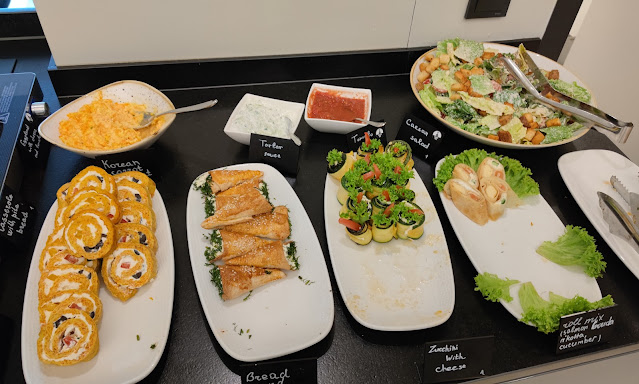

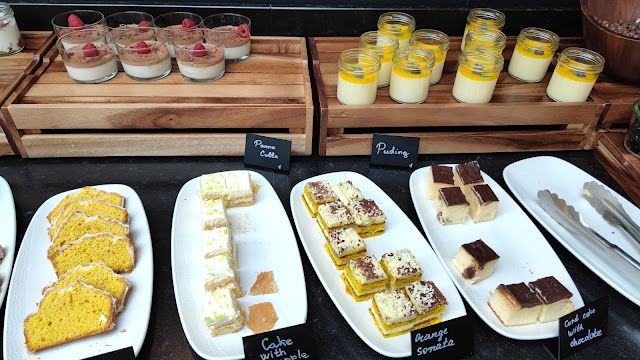










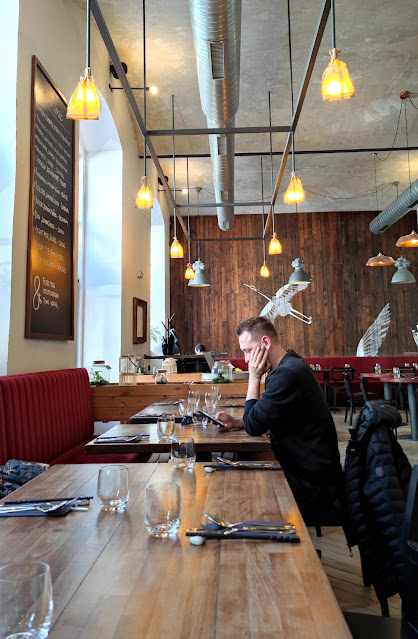












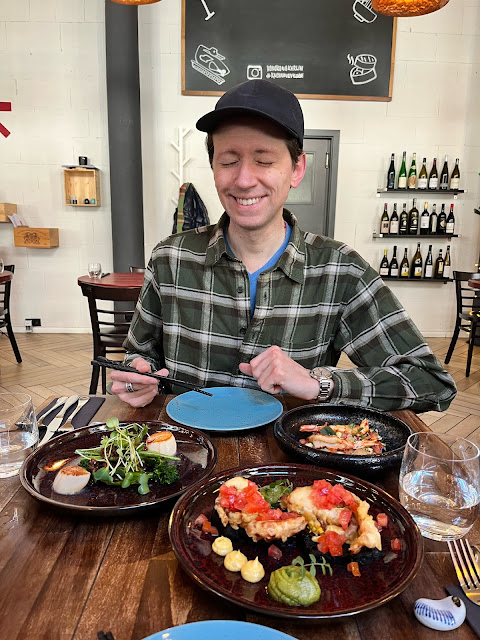

















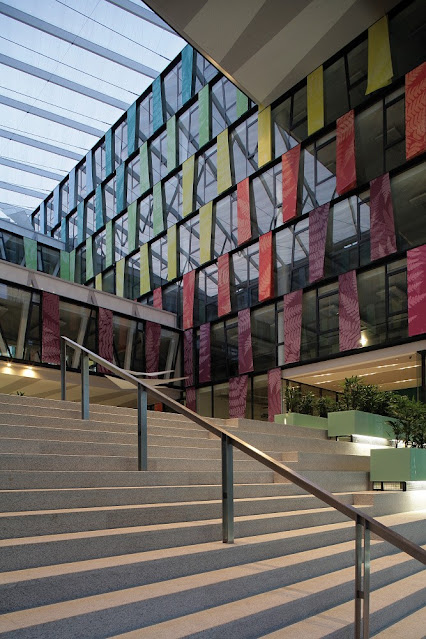


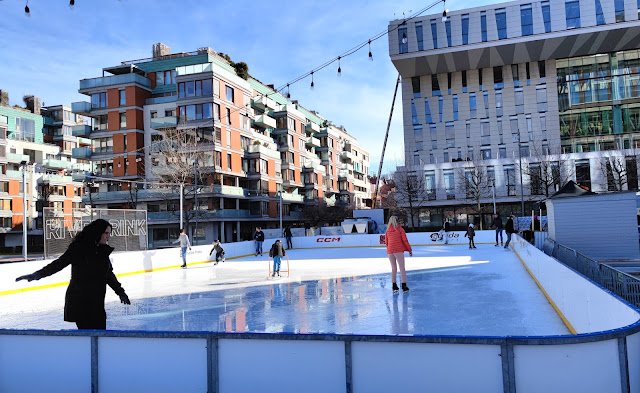

























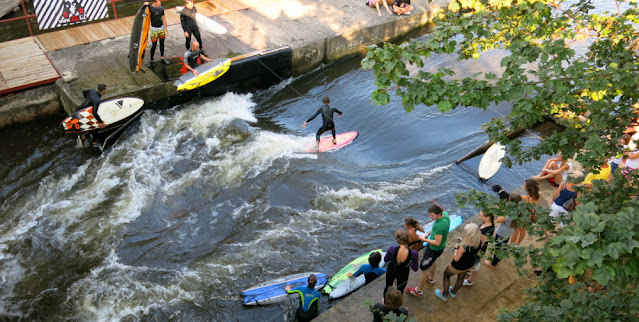
























.jpg)














8-20-21.jpg)


















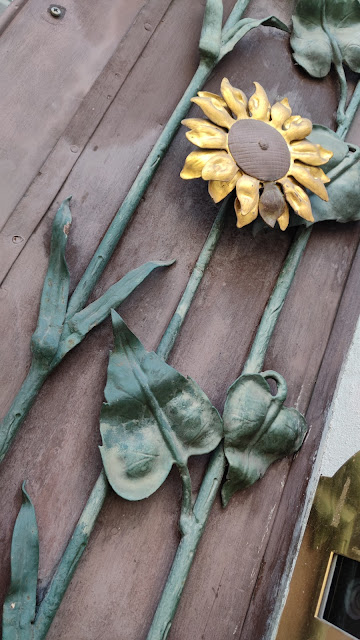









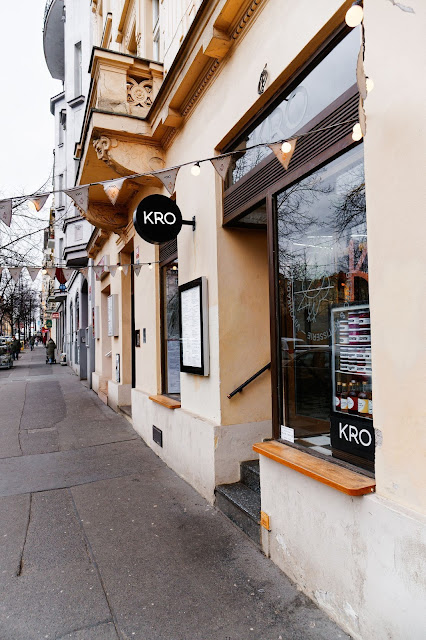

















































































.jpg)


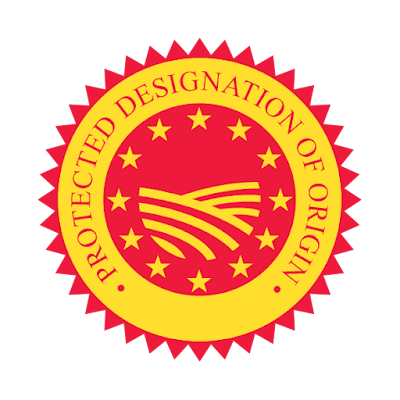





















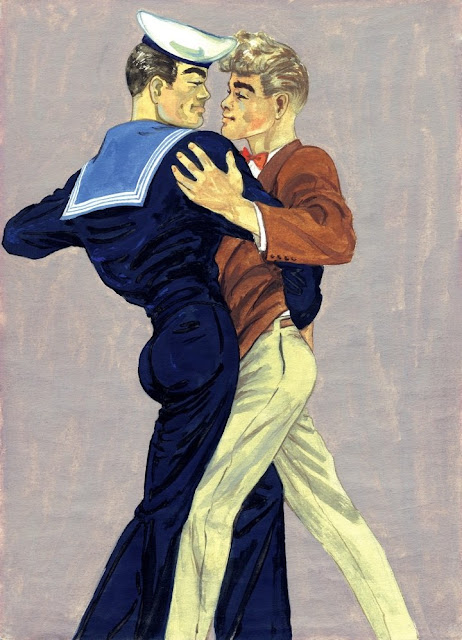











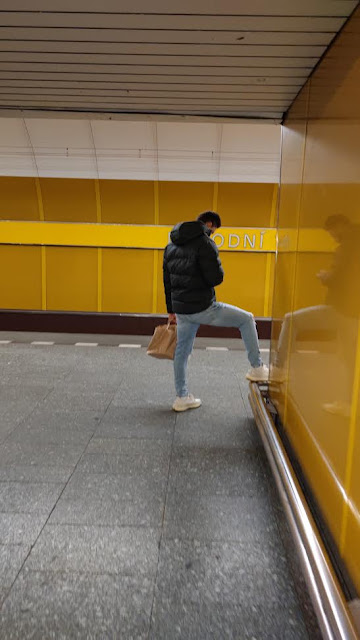






No comments:
Post a Comment
Don't be shy: leave your comments :)